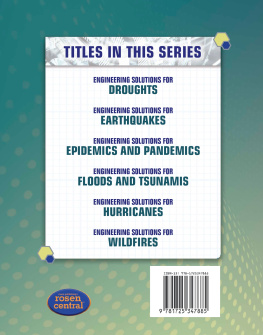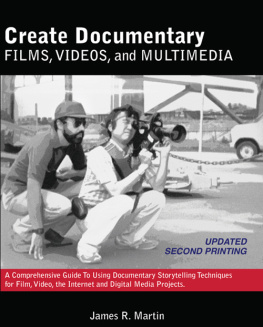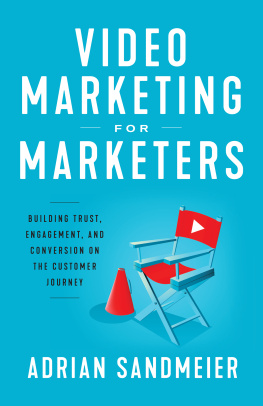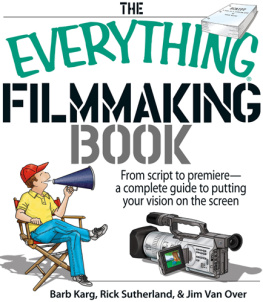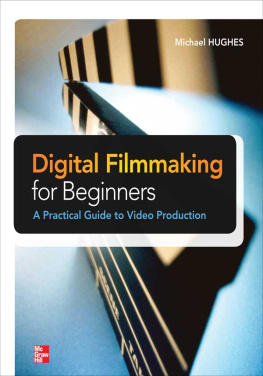The biggest change in video production has been the lower cost of video equipment, which puts it within range of nearly everyone. New cameras and software are relatively easy to use, allowing most people to master the technical skills quickly. Lower prices and decreased difficulty together make video production possible even for amateurs. The future of video production is also linked to advances in the related fields of television, computers, and the Web.

Here, a visitor at the Panasonic Center showroom in Tokyo, Japan, tries a 2016-model Panasonic AG-DVX200 memory card camera recorder
Technology is trending toward much higher resolution for video production and viewing. Resolution refers to the clarity or sharpness of a video image. Higher resolution indicates greater sharpness. It is measured by the number of dots (pixels) on a video or television screen. A 720-by-480-pixel screen (defined as standard resolution, or SD) displays 720 dots on 480 lines, or about 345,000 pixels. Standard resolution was replaced by high definition (HD), with 1,920 1,080 pixels. HD was replaced by ultra-high definition (UHD, or 4K), with 3,840 2,160 pixels, or four times the HD pixel count. DePaso considers UHD just the beginning of a trend. In 2014, only 1 percent of US homes had 4K television, but the percentage grew five to six times within the next year. By 2020, almost half of US households will have a 4K television.
HD video will continue to be around for many years. But by 2016, some smartphones already had UHD video capability. Also in 2016, a German company released a set of highperformance lenses, called HDFX360. These small lenses clip onto a smartphone. They enable it to create professional-quality DSLR images and eliminate the need for a large, expensive DSLR camera. After shooting UHD footage, producers need software capable of editing it. Rather than buying an expensive editing program, many video producers now rent professional software programs such as Adobe Creative Cloud, further decreasing costs. Finally, computer hardware must be able to handle the extra data produced by UHD resolution. It may take a few years for computer processors to catch up with video capabilities.
John Foundas of Foundation Digital Media points to another trend, toward smaller cameras and larger screens. Smaller cameras are easier to carry and maneuver; videographers can get shots that were once difficult or impossible. Smaller cameras also speed up shooting without compromising quality. Now that UHD is available, people expect and demand higher-quality images. Larger screens on televisions, monitors, and mobile devices will better display these high-definition pictures. Finally, although Foundas does not give specifics, he also hopes for improvements in audio quality and in techniques for seamlessly synchronizing audio and video.
FUTURE USES OF VIDEO
A quick glance through YouTube and Facebook shows vast quantities of amateur video content. Some of this video content is personal, made to entertain or to record an event. Some is business related, to show products or train employees. Most individuals and many companies are not overly concerned with video quality and will not hire professionals to produce their videos. This trend is likely to increase, resulting in fewer video jobs in these areas.

Candace Payne, the Chewbacca Mom, became an internet sensation after she livestreamed a video of herself laughing uncontrollably in her Chewbacca mask.
But live video streaming is an exploding trend. In live streaming, video content is highly compressed and sent continuously over the internet. It is decompressed and viewed immediately upon arrival. The viewer sees it in real time (as it is sent), rather than waiting for the entire file to download. Not long ago, live video streaming was very expensive and required intensive hardware. But with new technology, events can be live streamed wirelessly over computers or smartphones. This opens up a whole new world of possibilities.
Professional applications of live streaming, including meetings, training sessions, seminars, conferences, and presentations, are becoming common. During conferencing, people view content and computer screens remotely, while talking directly with other participants. Live streaming of high school and university classes can replace commuting and bring education to remote locations. Often live streaming is combined with on-demand availability of classes, so students can access them at more convenient times. Recreational and cultural activities, such as sports and concerts, may also be live streamed. Live streaming instantly connects many thousands of people around the world.
Smart TVs, with internet connectivity, are already becoming part of everyday life. They have web browsers so they can be used as computers, as well as to use applications such as Netflix for content viewing. The trend suggests that, in the near future, you will receive your favorite television shows over the internet rather than over standard broadcast channels. Content for all of these trending technologies will be provided by tomorrows video producers.
THE FUTURE FOR BUSINESS VIDEO PRODUCERS
Writing for One Market Media (OMM), Jimm Fox provides insight into the future of aspiring video producers. He points out that some trends work against new producersthe low price of equipment and software makes amateur video production easier, and the rise of online production introduces competition from around the world. On the up side, a producer can turn professional with a minimal investment in equipment. Having expensive video equipment doesnt make you a good video producer any more than having an expensive pen makes you a good writer, Fox cautions.
There is an ever-increasing demand for business videos. By 2017, 69 percent of consumer internet traffic will be video based, and video-on-demand will have nearly tripled. Video-ondemand (VOD) systems allow users to watch videos when they choose, rather than at a specific time. As television and other mass-audience content gives way to mobile viewing on ones own schedule, business videos will target smaller and more specialized audiences. Producers will be asked to produce and deliver customized videos.
Business video producers will need to specialize. They might become experts in a certain business fieldhealth care or real estate, for example. They might become experts on a certain type or style of video, such as the two-minute explainer video ( 2minuteexplainer.com ) that helps people understand technology (or another product) before they buy it. Successful video producers must be able to tell a client how video can help solve a business problem. Also, there is a trend away from todays fake or staged videos toward real reality, or video that is not staged or only slightly staged. Unstaged videos capture peoples real reactions to products and services. The spread of smartphone cameras makes this much easier. According to Fox, Winning with fake is going to get tougher and tougher.





